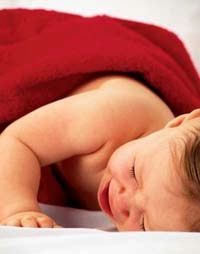Most people don't think about their earaches much, but, when one develops, the affected ear can feel as if it has taken on monster proportions. For all the unspeakable pain caused by earaches, they are rarely life threatening. Still, they can be serious, especially if they are caused by infection. That's why it's best to diagnose and treat your earaches as soon as possible. On this page, you will fill some simple but effective home remedies for identifying and treating your earaches.
Signs of an Earache
Advertisement
Signs of an earache or ear infection include ear pain and hearing loss. In a young child, clues that an ear infection may be present include rubbing or tugging at the ear, excessive crying or fussiness, fever, nausea, and vomiting. Since an untreated ear infection can lead to permanent hearing loss, and since ear pain can sometimes reflect a problem in another part of the body, it is important to have an earache checked out by a doctor.
Other than infection, the most common cause of earache is a blocked eustachian tube. The eustachian tube is a thin, membrane-lined tube that connects the inside back portion of the nose with the middle ear. Normally, when you swallow, the eustachian tube opens so that the air pressure in the middle ear is equalized with the air pressure in the atmosphere. Sometimes, however, the eustachian tube can become blocked, usually as a result of a cold, a sinus or throat infection, or an allergy. When this happens, a vacuum occurs in the middle ear, sucking the eardrum inward and stretching it painfully taut.
This type of earache is especially common in people who travel by air. As the plane takes off, the air pressure in the plane's cabin decreases, and as the plane lands, the air pressure in the cabin increases; in each instance, the pressure change occurs very rapidly. While normally the air in the eustachian tube manages to equalize on its own, if there is congestion in the upper respiratory tract -- such as a stuffy nose caused by allergies or a cold--the tubes may not behave so naturally. (This type of earache can also occur as a result of pressure changes during an elevator ride in a tall building and during scuba diving.)
Home Remedies for Earaches
An earache can be a real pain in the neck, jaw, and, of course, ear. Fortunately, there are some home remedies you can try to ward off ear pain that results from the ups and downs of air travel:
Swallow hard. When you swallow, you activate the muscle that opens the eustachian tube. On an airplane, when the pilot announces that it's time to fasten your seat belts for landing, get your mouth set to swallow. Frequent swallowing can also bring some temporary relief from earache pain until you can get to the doctor.
Keep your mouth moving. You swallow more often when you chew gum or suck on a hard candy, so pop some into your mouth just before the plane descends.
Don't stifle a yawn. Yawning is an excellent way to keep the eustachian tube open.
Stay awake. If you're sleeping, you're not going to be swallowing, so ask your seatmate or a flight attendant to wake you before descent.
Hold your nose. If your ears still become uncomfortably blocked as the plane descends, the American Academy of Otolaryngology, Head and Neck Surgery suggests that you try this: With the thumb and forefinger of one hand, pinch your nostrils tightly closed, and use the forefinger of your other hand to press closed the external opening of the unaffected ear. Now, with your mouth closed, try to blow out through the pinched nostrils, blowing as forcefully as you would blow your nose. Repeat if necessary. You should experience a cracking sensation or a loud pop and a relief of the pain if the maneuver works. Don't try this trick if you have a sore throat, fever, or other signs of brewing upper-respiratory infection, however, because the infection might be forced into your ears. And don't attempt it if you have a heart or circulatory disorder.
Reach for relief. Frequent flyers should tuck away a decongestant pill or nasal spray to use an hour or so before landing. This shrinks the nasal membranes, making it easier to keep the eustachian tube open. Over-the-counter medications like these are not for everyone, however. People with heart disease, high blood pressure, irregular heart rhythms, or thyroid disease should avoid them. Pregnant women and individuals subject to anxiety should stay away from them, too. If you suffer from allergies or sinusitis, however, you can reduce the risk of ear pain by taking your medication at the beginning of the flight.
Take the train. If, despite all your best efforts, you still end up with an uncomfortable stuffed feeling and pain following air travel, you might consider traveling by land rather than air.
Home Remedies for Children's Earaches

Kids get more ear infections than any other ailment except the common cold. In fact, according to the American Academy of Pediatrics (AAP), most children have at least one ear infection by the time they are three years old. The following symptoms may suggest that your child has an earache, according to the AAP:
- Pain. In a younger child, pain can cause irritability, crying, and overall fussiness.
- Loss of appetite
- Trouble sleeping
- Fever ranging from 100 to 104 degrees Fahrenheit
- Ear drainage. Look for foul-smelling yellow or white fluid, sometimes tinged with blood.
- Difficulty hearing
Whether you're young or old, an earache is no fun. Though your earache will most likely clear up and in a few days, the pain and pressure can make those few days feel like a lifetime. Now that you know what exactly an earache is and how to identify one, you should not hesitate to use our home remedies for earaches to soothe the discomfort.
Advertisement
